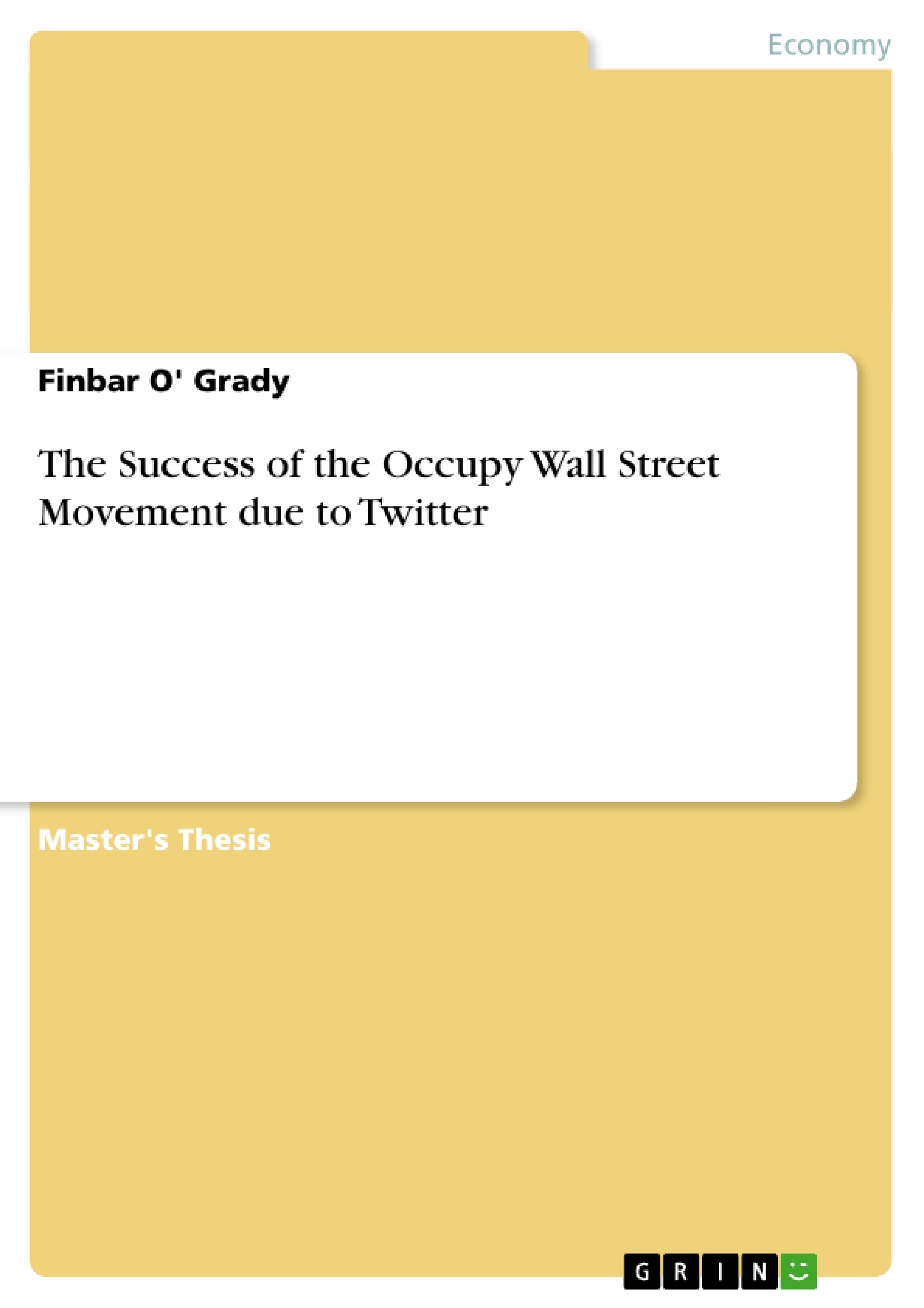The “Occupy Movement” is an international protest movement driven by people’s discontent with social and economic inequality. This paper is based primarily on Mark Earls book 'Herd', particularly his research regarding how “All mass behavior is a result of interacting individuals within a specific context” (Herd 2009 p.147). It will examine social media’s ability to magnify how word of mouth can influence mass behavior also considering Seth Godin book “Tribes” in this context and the increased speed at which this can happen due to social media (Godin 2008). The paper discusses how the Occupy Movement was partly inspired by the Arab Spring uprisings which had already demonstrated the power that social media can have on mass behavior throughout 2011. “We use Facebook to schedule the protests, Twitter to coordinate, and youtube to tell the world” was exclaimed by a Cairo activist to convey how they were leveraging social media to their advantage during the riots in Egypt (Casilli & Tubaro 2011). Social media refers to the use of both web-based and mobile technologies to allow people to communicate with each other and build relationships. Micro blogging sites such Twitter fall under the large scope of social media, as do social networking sites such as Facebook. Since the advent of Smartphones, people have access to social media sites at all times. People often look to Twitter for news first as updates about current events often appear on Twitter before they appear on major news outlets, The paper will discuss both the advantages of disadvantages of how social media can be utilized by the people involved in protests or riots by comparing the Cronulla riots of 2005 against the London riots of 2011 when social media was much more accessible and common place. The paper will also look at how the Occupy Movement spread across the world very quickly and discuss Occupy Wall Street’s future from the view point of it being a brand. It will conclude by showing that the Occupy Movement can attribute its growth and participation to social media’s effect on mass behavior, and in particular why Twitter is largely responsible for its success.
Contents
1.Abstract
1.1 Keywords
2.Acknowledgements
3.Introduction
4.The Occupy Movement
4.1 The Arab Spring Influence
4.2 Motivations behind Occupy Wall Street
4.3 The Spread of the Occupy Movement
5.Social media
5.1 Introduction to Social Media
5.2 Facebook
5.3 Smartphones
6.Twitters Influence on the Occupy Movement
6.1 What is Twitter?
6.2 Raising Awareness of the Occupy Movement
6.3 Organisation of the Protests
6.4 Sending Updates during the Protests
7.Consumer Decision Journey
8.Mass behavior
8.1 Word of Mouth
8.2 The Influencers
9.The Down Sides to Social Medias Influence on Mass Behavior
9.1 Cronulla Riots
9.2 London Riots
10.Has the Occupy Wall Street movement been successful?
11.The Future for Occupy Wall Street
12.Conclusion
13.References
- Citation du texte
- Finbar O' Grady (Auteur), 2012, The Success of the Occupy Wall Street Movement due to Twitter, Munich, GRIN Verlag, https://www.grin.com/document/229553
-

-

-

-
Téléchargez vos propres textes! Gagnez de l'argent et un iPhone X. -

-
Téléchargez vos propres textes! Gagnez de l'argent et un iPhone X. -

-
Téléchargez vos propres textes! Gagnez de l'argent et un iPhone X. -

-
Téléchargez vos propres textes! Gagnez de l'argent et un iPhone X. -

-
Téléchargez vos propres textes! Gagnez de l'argent et un iPhone X. -

-
Téléchargez vos propres textes! Gagnez de l'argent et un iPhone X. -

-
Téléchargez vos propres textes! Gagnez de l'argent et un iPhone X. -

-
Téléchargez vos propres textes! Gagnez de l'argent et un iPhone X. -

-
Téléchargez vos propres textes! Gagnez de l'argent et un iPhone X. -

-
Téléchargez vos propres textes! Gagnez de l'argent et un iPhone X.

